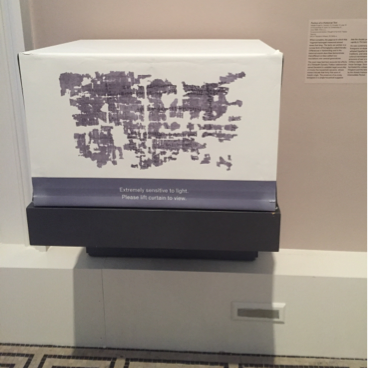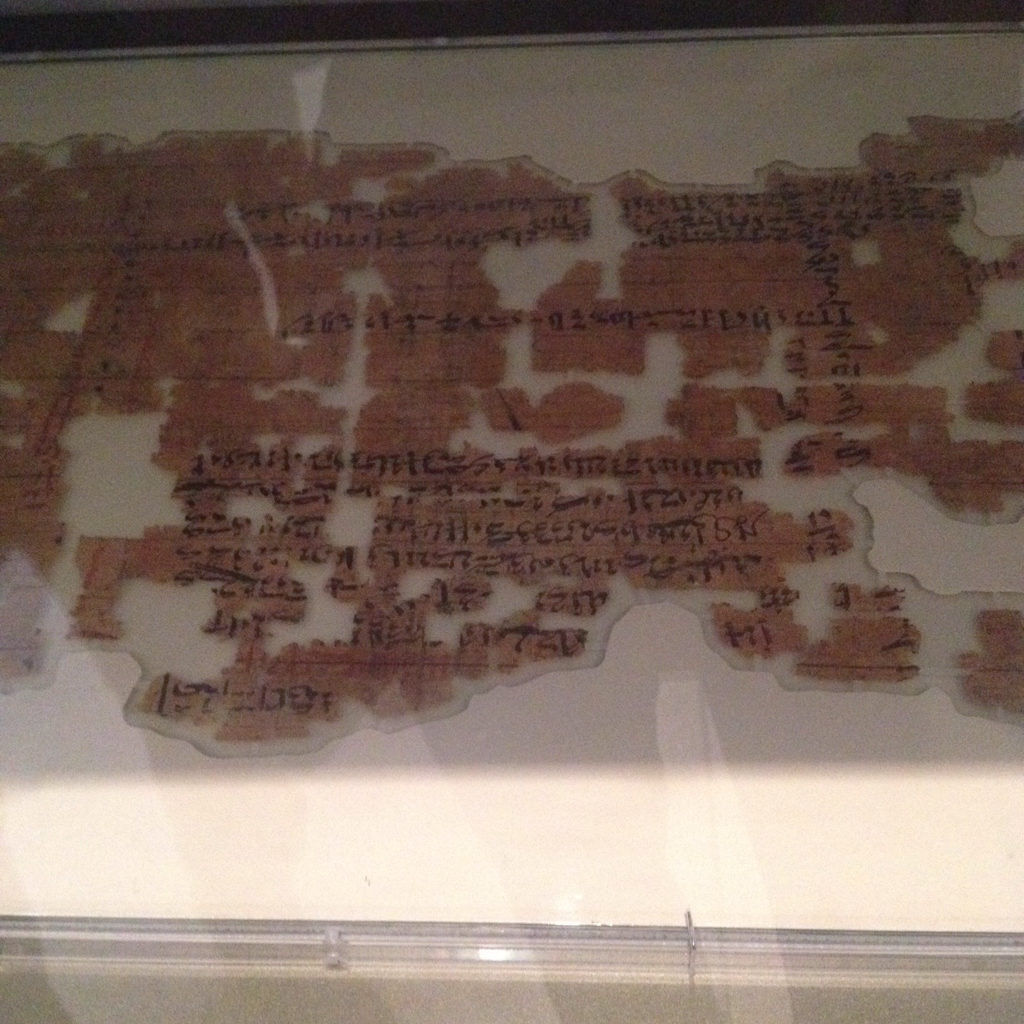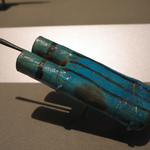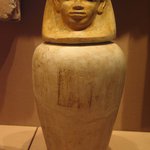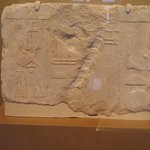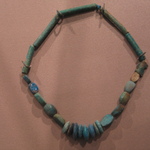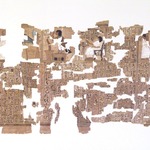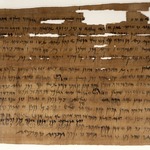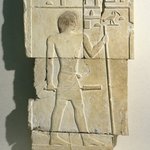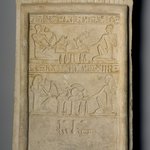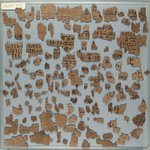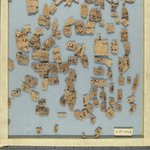

Portion of a Historical Text, ca. 1809–1743 B.C.E. Papyrus, ink, 35.1446a-e: 11 1/2 × 71 5/8 in. (29.2 × 182 cm). Brooklyn Museum, Gift of Theodora Wilbour, 35.1446a-e (Photo: Brooklyn Museum, 35.1446d_PS20.jpg)

Portion of a Historical Text, ca. 1809–1743 B.C.E. Papyrus, ink, 35.1446a-e: 11 1/2 × 71 5/8 in. (29.2 × 182 cm). Brooklyn Museum, Gift of Theodora Wilbour, 35.1446a-e (Photo: Brooklyn Museum, 35.1446e_side1_PS1.jpg)

Portion of a Historical Text, ca. 1809–1743 B.C.E. Papyrus, ink, 35.1446a-e: 11 1/2 × 71 5/8 in. (29.2 × 182 cm). Brooklyn Museum, Gift of Theodora Wilbour, 35.1446a-e (Photo: Brooklyn Museum, 35.1446e_side2_PS1.jpg)

Portion of a Historical Text, ca. 1809–1743 B.C.E. Papyrus, ink, 35.1446a-e: 11 1/2 × 71 5/8 in. (29.2 × 182 cm). Brooklyn Museum, Gift of Theodora Wilbour, 35.1446a-e (Photo: Brooklyn Museum, 35.1446a-e_SL1.jpg)

Portion of a Historical Text, ca. 1809–1743 B.C.E. Papyrus, ink, 35.1446a-e: 11 1/2 × 71 5/8 in. (29.2 × 182 cm). Brooklyn Museum, Gift of Theodora Wilbour, 35.1446a-e (Photo: Brooklyn Museum, 35.1446a-e_negAA_bw_IMLS.jpg)

Portion of a Historical Text, ca. 1809–1743 B.C.E. Papyrus, ink, 35.1446a-e: 11 1/2 × 71 5/8 in. (29.2 × 182 cm). Brooklyn Museum, Gift of Theodora Wilbour, 35.1446a-e (Photo: Brooklyn Museum, 35.1446a-e_negA_bw_IMLS.jpg)
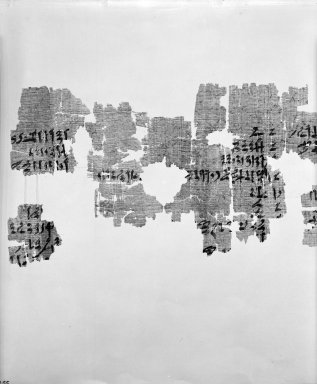
Portion of a Historical Text, ca. 1809–1743 B.C.E. Papyrus, ink, 35.1446a-e: 11 1/2 × 71 5/8 in. (29.2 × 182 cm). Brooklyn Museum, Gift of Theodora Wilbour, 35.1446a-e (Photo: Brooklyn Museum, 35.1446a-e_negBB_bw_IMLS.jpg)

Portion of a Historical Text, ca. 1809–1743 B.C.E. Papyrus, ink, 35.1446a-e: 11 1/2 × 71 5/8 in. (29.2 × 182 cm). Brooklyn Museum, Gift of Theodora Wilbour, 35.1446a-e (Photo: Brooklyn Museum, 35.1446a-e_negB_bw_IMLS.jpg)
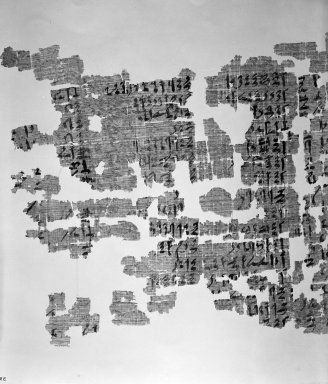
Portion of a Historical Text, ca. 1809–1743 B.C.E. Papyrus, ink, 35.1446a-e: 11 1/2 × 71 5/8 in. (29.2 × 182 cm). Brooklyn Museum, Gift of Theodora Wilbour, 35.1446a-e (Photo: Brooklyn Museum, 35.1446a-e_negCC_bw_IMLS.jpg)

Portion of a Historical Text, ca. 1809–1743 B.C.E. Papyrus, ink, 35.1446a-e: 11 1/2 × 71 5/8 in. (29.2 × 182 cm). Brooklyn Museum, Gift of Theodora Wilbour, 35.1446a-e (Photo: Brooklyn Museum, 35.1446a-e_negC_bw_IMLS.jpg)

Portion of a Historical Text, ca. 1809–1743 B.C.E. Papyrus, ink, 35.1446a-e: 11 1/2 × 71 5/8 in. (29.2 × 182 cm). Brooklyn Museum, Gift of Theodora Wilbour, 35.1446a-e (Photo: Brooklyn Museum, 35.1446a-e_negDD_bw_IMLS.jpg)

Portion of a Historical Text, ca. 1809–1743 B.C.E. Papyrus, ink, 35.1446a-e: 11 1/2 × 71 5/8 in. (29.2 × 182 cm). Brooklyn Museum, Gift of Theodora Wilbour, 35.1446a-e (Photo: Brooklyn Museum, 35.1446a-e_negD_bw_IMLS.jpg)

Portion of a Historical Text, ca. 1809–1743 B.C.E. Papyrus, ink, 35.1446a-e: 11 1/2 × 71 5/8 in. (29.2 × 182 cm). Brooklyn Museum, Gift of Theodora Wilbour, 35.1446a-e (Photo: Brooklyn Museum, 35.1446a-e_negEE_bw_IMLS.jpg)

Portion of a Historical Text, ca. 1809–1743 B.C.E. Papyrus, ink, 35.1446a-e: 11 1/2 × 71 5/8 in. (29.2 × 182 cm). Brooklyn Museum, Gift of Theodora Wilbour, 35.1446a-e (Photo: Brooklyn Museum, 35.1446a-e_negE_bw_IMLS.jpg)

Portion of a Historical Text, ca. 1809–1743 B.C.E. Papyrus, ink, 35.1446a-e: 11 1/2 × 71 5/8 in. (29.2 × 182 cm). Brooklyn Museum, Gift of Theodora Wilbour, 35.1446a-e (Photo: Brooklyn Museum, 35.1446a-e_negFF_bw_IMLS.jpg)

Portion of a Historical Text, ca. 1809–1743 B.C.E. Papyrus, ink, 35.1446a-e: 11 1/2 × 71 5/8 in. (29.2 × 182 cm). Brooklyn Museum, Gift of Theodora Wilbour, 35.1446a-e (Photo: Brooklyn Museum, 35.1446a-e_negF_bw_IMLS.jpg)

Portion of a Historical Text, ca. 1809–1743 B.C.E. Papyrus, ink, 35.1446a-e: 11 1/2 × 71 5/8 in. (29.2 × 182 cm). Brooklyn Museum, Gift of Theodora Wilbour, 35.1446a-e (Photo: Brooklyn Museum, 35.1446a-e_negGG_bw_IMLS.jpg)

Portion of a Historical Text, ca. 1809–1743 B.C.E. Papyrus, ink, 35.1446a-e: 11 1/2 × 71 5/8 in. (29.2 × 182 cm). Brooklyn Museum, Gift of Theodora Wilbour, 35.1446a-e (Photo: Brooklyn Museum, 35.1446a-e_negG_bw_IMLS.jpg)

Portion of a Historical Text, ca. 1809–1743 B.C.E. Papyrus, ink, 35.1446a-e: 11 1/2 × 71 5/8 in. (29.2 × 182 cm). Brooklyn Museum, Gift of Theodora Wilbour, 35.1446a-e (Photo: Brooklyn Museum, 35.1446a-e_negHH_bw_IMLS.jpg)
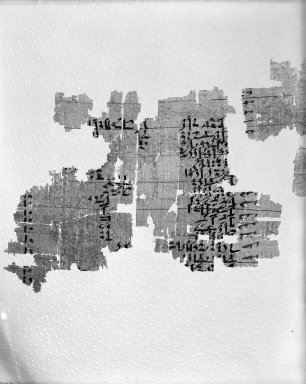
Portion of a Historical Text, ca. 1809–1743 B.C.E. Papyrus, ink, 35.1446a-e: 11 1/2 × 71 5/8 in. (29.2 × 182 cm). Brooklyn Museum, Gift of Theodora Wilbour, 35.1446a-e (Photo: Brooklyn Museum, 35.1446a-e_negH_bw_IMLS.jpg)

Portion of a Historical Text, ca. 1809–1743 B.C.E. Papyrus, ink, 35.1446a-e: 11 1/2 × 71 5/8 in. (29.2 × 182 cm). Brooklyn Museum, Gift of Theodora Wilbour, 35.1446a-e (Photo: Brooklyn Museum, 35.1446a-e_negII_bw_IMLS.jpg)
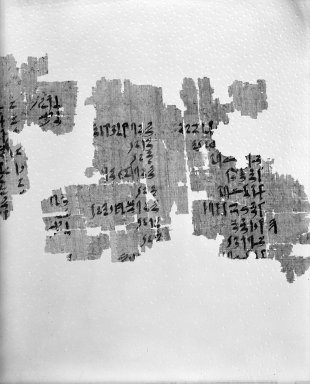
Portion of a Historical Text, ca. 1809–1743 B.C.E. Papyrus, ink, 35.1446a-e: 11 1/2 × 71 5/8 in. (29.2 × 182 cm). Brooklyn Museum, Gift of Theodora Wilbour, 35.1446a-e (Photo: Brooklyn Museum, 35.1446a-e_negI_bw_IMLS.jpg)

Portion of a Historical Text, ca. 1809–1743 B.C.E. Papyrus, ink, 35.1446a-e: 11 1/2 × 71 5/8 in. (29.2 × 182 cm). Brooklyn Museum, Gift of Theodora Wilbour, 35.1446a-e (Photo: Brooklyn Museum, 35.1446a-e_negJJ_bw_IMLS.jpg)

Portion of a Historical Text, ca. 1809–1743 B.C.E. Papyrus, ink, 35.1446a-e: 11 1/2 × 71 5/8 in. (29.2 × 182 cm). Brooklyn Museum, Gift of Theodora Wilbour, 35.1446a-e (Photo: Brooklyn Museum, 35.1446a-e_negJ_bw_IMLS.jpg)

Portion of a Historical Text, ca. 1809–1743 B.C.E. Papyrus, ink, 35.1446a-e: 11 1/2 × 71 5/8 in. (29.2 × 182 cm). Brooklyn Museum, Gift of Theodora Wilbour, 35.1446a-e (Photo: Brooklyn Museum, 35.1446a-e_negKK_bw_IMLS.jpg)

Portion of a Historical Text, ca. 1809–1743 B.C.E. Papyrus, ink, 35.1446a-e: 11 1/2 × 71 5/8 in. (29.2 × 182 cm). Brooklyn Museum, Gift of Theodora Wilbour, 35.1446a-e (Photo: Brooklyn Museum, 35.1446a-e_negK_bw_IMLS.jpg)

Portion of a Historical Text, ca. 1809–1743 B.C.E. Papyrus, ink, 35.1446a-e: 11 1/2 × 71 5/8 in. (29.2 × 182 cm). Brooklyn Museum, Gift of Theodora Wilbour, 35.1446a-e (Photo: Brooklyn Museum, 35.1446a-e_negLL_bw_IMLS.jpg)

Portion of a Historical Text, ca. 1809–1743 B.C.E. Papyrus, ink, 35.1446a-e: 11 1/2 × 71 5/8 in. (29.2 × 182 cm). Brooklyn Museum, Gift of Theodora Wilbour, 35.1446a-e (Photo: Brooklyn Museum, 35.1446a-e_negL_bw_IMLS.jpg)

Portion of a Historical Text, ca. 1809–1743 B.C.E. Papyrus, ink, 35.1446a-e: 11 1/2 × 71 5/8 in. (29.2 × 182 cm). Brooklyn Museum, Gift of Theodora Wilbour, 35.1446a-e (Photo: Brooklyn Museum, 35.1446a-e_negMM_bw_IMLS.jpg)

Portion of a Historical Text, ca. 1809–1743 B.C.E. Papyrus, ink, 35.1446a-e: 11 1/2 × 71 5/8 in. (29.2 × 182 cm). Brooklyn Museum, Gift of Theodora Wilbour, 35.1446a-e (Photo: Brooklyn Museum, 35.1446a-e_negM_bw_IMLS.jpg)

Portion of a Historical Text, ca. 1809–1743 B.C.E. Papyrus, ink, 35.1446a-e: 11 1/2 × 71 5/8 in. (29.2 × 182 cm). Brooklyn Museum, Gift of Theodora Wilbour, 35.1446a-e (Photo: Brooklyn Museum, 35.1446a-e_negNN_bw_IMLS.jpg)

Portion of a Historical Text, ca. 1809–1743 B.C.E. Papyrus, ink, 35.1446a-e: 11 1/2 × 71 5/8 in. (29.2 × 182 cm). Brooklyn Museum, Gift of Theodora Wilbour, 35.1446a-e (Photo: Brooklyn Museum, 35.1446a-e_negN_bw_IMLS.jpg)
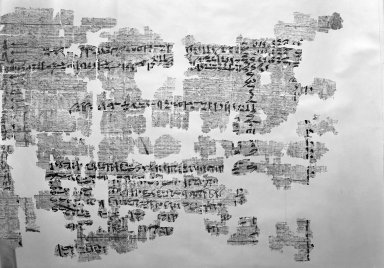
Portion of a Historical Text, ca. 1809–1743 B.C.E. Papyrus, ink, 35.1446a-e: 11 1/2 × 71 5/8 in. (29.2 × 182 cm). Brooklyn Museum, Gift of Theodora Wilbour, 35.1446a-e (Photo: Brooklyn Museum, 35.1446a-e_negOO_bw_IMLS.jpg)

Portion of a Historical Text, ca. 1809–1743 B.C.E. Papyrus, ink, 35.1446a-e: 11 1/2 × 71 5/8 in. (29.2 × 182 cm). Brooklyn Museum, Gift of Theodora Wilbour, 35.1446a-e (Photo: Brooklyn Museum, 35.1446a-e_negO_bw_IMLS.jpg)

Portion of a Historical Text, ca. 1809–1743 B.C.E. Papyrus, ink, 35.1446a-e: 11 1/2 × 71 5/8 in. (29.2 × 182 cm). Brooklyn Museum, Gift of Theodora Wilbour, 35.1446a-e (Photo: Brooklyn Museum, 35.1446a-e_negPP_bw_IMLS.jpg)

Portion of a Historical Text, ca. 1809–1743 B.C.E. Papyrus, ink, 35.1446a-e: 11 1/2 × 71 5/8 in. (29.2 × 182 cm). Brooklyn Museum, Gift of Theodora Wilbour, 35.1446a-e (Photo: Brooklyn Museum, 35.1446a-e_negP_bw_IMLS.jpg)
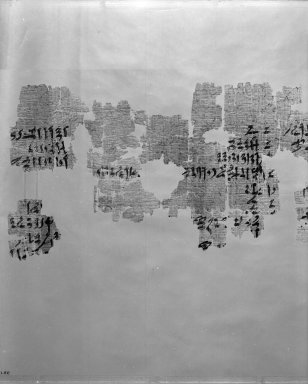
Portion of a Historical Text, ca. 1809–1743 B.C.E. Papyrus, ink, 35.1446a-e: 11 1/2 × 71 5/8 in. (29.2 × 182 cm). Brooklyn Museum, Gift of Theodora Wilbour, 35.1446a-e (Photo: Brooklyn Museum, 35.1446a-e_negQQ_bw_IMLS.jpg)

Portion of a Historical Text, ca. 1809–1743 B.C.E. Papyrus, ink, 35.1446a-e: 11 1/2 × 71 5/8 in. (29.2 × 182 cm). Brooklyn Museum, Gift of Theodora Wilbour, 35.1446a-e (Photo: Brooklyn Museum, 35.1446a-e_negQ_bw_IMLS.jpg)

Portion of a Historical Text, ca. 1809–1743 B.C.E. Papyrus, ink, 35.1446a-e: 11 1/2 × 71 5/8 in. (29.2 × 182 cm). Brooklyn Museum, Gift of Theodora Wilbour, 35.1446a-e (Photo: Brooklyn Museum, 35.1446a-e_negRR_bw_IMLS.jpg)

Portion of a Historical Text, ca. 1809–1743 B.C.E. Papyrus, ink, 35.1446a-e: 11 1/2 × 71 5/8 in. (29.2 × 182 cm). Brooklyn Museum, Gift of Theodora Wilbour, 35.1446a-e (Photo: Brooklyn Museum, 35.1446a-e_negR_bw_IMLS.jpg)

Portion of a Historical Text, ca. 1809–1743 B.C.E. Papyrus, ink, 35.1446a-e: 11 1/2 × 71 5/8 in. (29.2 × 182 cm). Brooklyn Museum, Gift of Theodora Wilbour, 35.1446a-e (Photo: Brooklyn Museum, 35.1446a-e_negSS_bw_IMLS.jpg)

Portion of a Historical Text, ca. 1809–1743 B.C.E. Papyrus, ink, 35.1446a-e: 11 1/2 × 71 5/8 in. (29.2 × 182 cm). Brooklyn Museum, Gift of Theodora Wilbour, 35.1446a-e (Photo: Brooklyn Museum, 35.1446a-e_negS_bw_IMLS.jpg)

Portion of a Historical Text, ca. 1809–1743 B.C.E. Papyrus, ink, 35.1446a-e: 11 1/2 × 71 5/8 in. (29.2 × 182 cm). Brooklyn Museum, Gift of Theodora Wilbour, 35.1446a-e (Photo: Brooklyn Museum, 35.1446a-e_negTT_bw_IMLS.jpg)

Portion of a Historical Text, ca. 1809–1743 B.C.E. Papyrus, ink, 35.1446a-e: 11 1/2 × 71 5/8 in. (29.2 × 182 cm). Brooklyn Museum, Gift of Theodora Wilbour, 35.1446a-e (Photo: Brooklyn Museum, 35.1446a-e_negT_bw_IMLS.jpg)

Portion of a Historical Text, ca. 1809–1743 B.C.E. Papyrus, ink, 35.1446a-e: 11 1/2 × 71 5/8 in. (29.2 × 182 cm). Brooklyn Museum, Gift of Theodora Wilbour, 35.1446a-e (Photo: Brooklyn Museum, 35.1446a-e_negU_bw_IMLS.jpg)

Portion of a Historical Text, ca. 1809–1743 B.C.E. Papyrus, ink, 35.1446a-e: 11 1/2 × 71 5/8 in. (29.2 × 182 cm). Brooklyn Museum, Gift of Theodora Wilbour, 35.1446a-e (Photo: Brooklyn Museum, 35.1446a-e_negV_bw_IMLS.jpg)

Portion of a Historical Text, ca. 1809–1743 B.C.E. Papyrus, ink, 35.1446a-e: 11 1/2 × 71 5/8 in. (29.2 × 182 cm). Brooklyn Museum, Gift of Theodora Wilbour, 35.1446a-e (Photo: Brooklyn Museum, 35.1446a-e_negW_bw_IMLS.jpg)

Portion of a Historical Text, ca. 1809–1743 B.C.E. Papyrus, ink, 35.1446a-e: 11 1/2 × 71 5/8 in. (29.2 × 182 cm). Brooklyn Museum, Gift of Theodora Wilbour, 35.1446a-e (Photo: Brooklyn Museum, 35.1446a-e_negX_bw_IMLS.jpg)
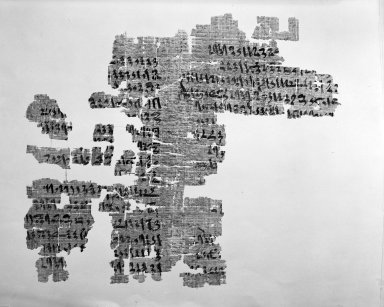
Portion of a Historical Text, ca. 1809–1743 B.C.E. Papyrus, ink, 35.1446a-e: 11 1/2 × 71 5/8 in. (29.2 × 182 cm). Brooklyn Museum, Gift of Theodora Wilbour, 35.1446a-e (Photo: Brooklyn Museum, 35.1446a-e_negY_bw_IMLS.jpg)

Portion of a Historical Text, ca. 1809–1743 B.C.E. Papyrus, ink, 35.1446a-e: 11 1/2 × 71 5/8 in. (29.2 × 182 cm). Brooklyn Museum, Gift of Theodora Wilbour, 35.1446a-e (Photo: Brooklyn Museum, 35.1446a-e_negZ_bw_IMLS.jpg)
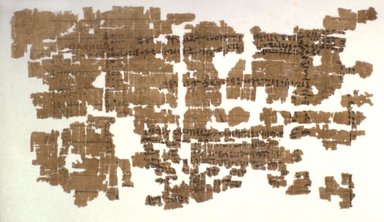
Portion of a Historical Text, ca. 1809–1743 B.C.E. Papyrus, ink, 35.1446a-e: 11 1/2 × 71 5/8 in. (29.2 × 182 cm). Brooklyn Museum, Gift of Theodora Wilbour, 35.1446a-e (Photo: Brooklyn Museum, 35.1446a-e_side1.jpg)

Portion of a Historical Text, ca. 1809–1743 B.C.E. Papyrus, ink, 35.1446a-e: 11 1/2 × 71 5/8 in. (29.2 × 182 cm). Brooklyn Museum, Gift of Theodora Wilbour, 35.1446a-e (Photo: Brooklyn Museum, 35.1446a-e_side2.jpg)

Portion of a Historical Text, ca. 1809–1743 B.C.E. Papyrus, ink, 35.1446a-e: 11 1/2 × 71 5/8 in. (29.2 × 182 cm). Brooklyn Museum, Gift of Theodora Wilbour, 35.1446a-e (Photo: Brooklyn Museum, CUR.35.1446a-e_erg2.jpg)
Portion of a Historical Text
Egyptian, Classical, Ancient Near Eastern Art
The most important text recounts the efforts of a Thirteenth Dynasty Theban noblewoman named Senebtisi to establish legal ownership of ninety-five household servants, whose names indicate that forty-five were of Asiatic origin. The presence of so many foreigners in a single household suggests that the Asiatic population was increasing rapidly in Thirteenth Dynasty Egypt.
As was customary, some of these foreigners no doubt married Egyptians, adopted Egyptian beliefs and cultural traditions, and were absorbed into the cultural mainstream. Others, especially prisoners of war or descendants of military captives, remained loyal to their Asian heritage. Some of these foreigners facilitated the collapse of the Middle Kingdom and the later conquest of Egypt by the Asiatic Hyksos in the Second Intermediate Period.
- Place collected: Egypt
- Possible place made: Thebes, Egypt






